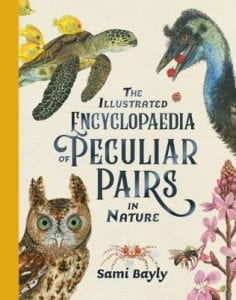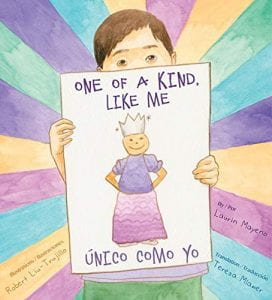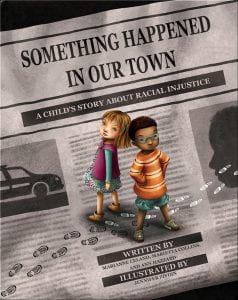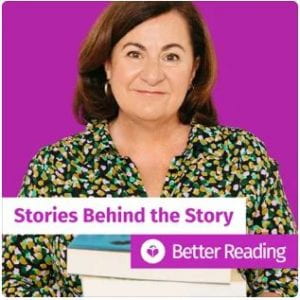
“Discover the most curious relationship in the natural world in this beautifully illustrated peculiar pairing between all kinds of plants and animals” Lothian Children’s Books
Did you know that the Egyptian Spiny-tailed Lizard and the Arabian Fattail Scorpion work together in the desert or that a Goblin Fla lives its whole life on a Leadbeater’s Possum? These are just some of the great pairing you’ll learn about in Sami Bayly’s third book! Like her previous two instalments each page is filled with scientific illustrations and easy to read information that make learning about these wonderful creatures more accessible for all.
For each animal there is a comprehensive description, diet, location/habitat, conservation status and a few fun facts that allow the reader to learn all about the different animals highlighted within the book. The illustrations that accompany the information are beautifully drawn to accurately show the animals and wildlife as close to what they look like in real life (check out the Colombian Lesserblack Tarantula on page 32) which adds to the learning experience. All of Sami’s books bring a new life to non fiction resources that both children and adults will find engaging and discover some fantastic new facts. This would be a wonderful addition to any children’s library collection.
Topic: Censorship
Banned Books Week is an annual event primarily in the United States which celebrates the freedom to read. This event was started in 1982 when there was a surge in a number of books being challenges within schools, bookstores, and libraries. Its goal is to highlight and bring attention to the harms of censorship and each year they compile a list of the most challenged books (Banned Books Week, 2022). Throughout the week they hold events that opens up the conversation around censorship with authors and illustrators who have been affected by these bans. Last year a webinar was held with Marianne Celano, Marietta Collins, and Ann Hazzard, the authors of “Something Happened in Our Town: A Child’s Story About Racial Injustice,” and Laurin Mayeno and Robert Trujillo, the author and artist of “One of a Kind, Like Me” (Banned Books Week, 2021).


Each of these picture books had been challenged and banned in different state of America as specific school boards thought that they would be detrimental to library collections. Something Happened in Our Town was thought to promote anti police ideals and One of a Kind, Like Me would confuse children’s gender identity. All of the authors and illustrators of the books were drawing from personal experiences and the books were written in a way that would be accessible to children, even though the content was dealing with important themes. It was interesting to listen to them speak about how they found out about the bans on their works and why they think books addressing these issues are important.
Like the discussion around diversity in children’s books it is vital that children and young adults are exposed to these issues in a respectful and accessible way. Marianne, Marietta and Ann highlighted that children are aware of the world around them and not naïve to the big issues, while Laurin explained that books can help children expand their knowledge of the world around them. When these bans happen, it has a widespread impact on the development of children and young adults. Intellectual freedom is the ability to learn from experiences in books and for children to see a reflection of themselves and in turn this allows them to grow into an informed citizen of the world (Pekoll, 2022, p.33).
After watching the webinar, I was interested in the Australian standard and how public libraries would deal with this issue. For libraries in New South Wales, the State Library has a guideline that deals with the topic of censorship which was framed using varying statements on free access to information and intellectual freedom. Public libraries have a duty to be an unbiased source of information and ideas and provide free and equitable access to the community (State Library of New South Wales, 2022). If items are challenged by members of the community, then it is important that the library has a well-developed collection development policy in which has concessions for these instances. For librarians’ censorship is an important issue that will always be present within any library setting. I feel very lucky that within Australia the way books are viewed is very differently to what happens within the US but as an information professional it is important, we know what is going on around the world.
Word Count: 548
References
Banned Books Week. (2021). Censorship of Children’s Books [Video]. YouTube. https://www.youtube.com/watch?v=ZGw6subDAbM
Banned Books Week. (2022). About. https://bannedbooksweek.org/about/
Pekoll, K. (2020). Managing censorship challenges beyond books. Knowledge Quest, 49(1), 28-33.
State Library of New South Wales. (2022). Censorship. https://www.sl.nsw.gov.au/public-library-services/censorship
Topic: Diversity
In 2019 Better Reading were given a grant by the Copyright Agency Cultural Fund to produce a 6-part podcast series which explored diversity within children’s books, which was released in 2020. Host Cheryl Akle spoke with Dr Randa Abdel Fattah, Will Kostakis, Maxine Beneba Clarke, Laura Bloom, Deborah Abela & Rachel Bin Salleh from Magabala Books on how diversity is a hot topic within Australian publishing, and they spoke about their views on how diverse children’s books are (Better Reading, 2020). Each episode explored different themes, cultural diversity and the lack of representation in the school curriculum, LGBTQIA+ representation, the importance of disabled characters in books and the benefits of exposing children to diverse literature from all ages.

Image: Better Reading, 2020
From listening to this series, it reiterated to me that the world is changing and evolving around us and this needs to be reflected in the literature that is being published for children and young adults. There seems to be a fear around not exposing children to these issues too early or they will feel overwhelmed, or they won’t understand, but the most powerful thing that can happen is children seeing reflections of their experiences in literature. One of the topics that arose while listening to Maxine Beneba Clarke was that in today’s society families can be made up by all different parts. This might seem like a small issue when speaking about diversity within books however its importance is immense. Family-diverse books can show children even if they come from different lifestyles, they still make up a family (Mokrzycki, 2021).
When I finished the series, I reflected back on the books that I have read in 2022 and took stock of the diverse characters that were present in the different texts. There were stories that addressed mental health issues, neurodiverse and LGBTQIA+ characters in every second or third book and there were a number of authors who come from diverse backgrounds and wrote about their culture and experiences. When I think back to when I was in my teenage years and recalling the novels I was reading, they didn’t offer these types of themes on this scale and that was only 10 years ago!
This series is a wonderful tool for those who are in a position that shape collections and programs for children and young adults. Diverse collections and using these books within programming shows children there are others in the world like them and this empowers them in their reading journey. Reading diversly also allows children to develop those vital skills that they learn through reading like empathy and establishes good lifelong reading habits (Cahill, Ingram & Joo, 2021, p.270). I really enjoyed listening to this podcast and reflecting back on each episode. It made me think about how moving forward when I am in the position of developing a program or shaping a collection that I make a conscious effort to select books that are wonderfully diverse and reflect the world around us.
Word Count: 499
References
Better Reading. (2020). New 6-part podcast series: A conversation about diversity in children’s books. https://www.betterreading.com.au/podcast/new-6-part-podcast-series-a-conversation-about-diversity-in-childrens-books/
Cahill, M., Ingram, E. & Joo, S. (2021). Storytime programs as mirrors, windows and sliding glass doors? Addressing children’s needs through diverse book selection. The Library Quarterly, 91(3), 269-284. https://doi.org/10.1086/714317
Mokrzycki, S. (2021). The need for family-diverse picture books. https://www.scisdata.com/connections/issue-119/the-need-for-family-diverse-picture-books/



